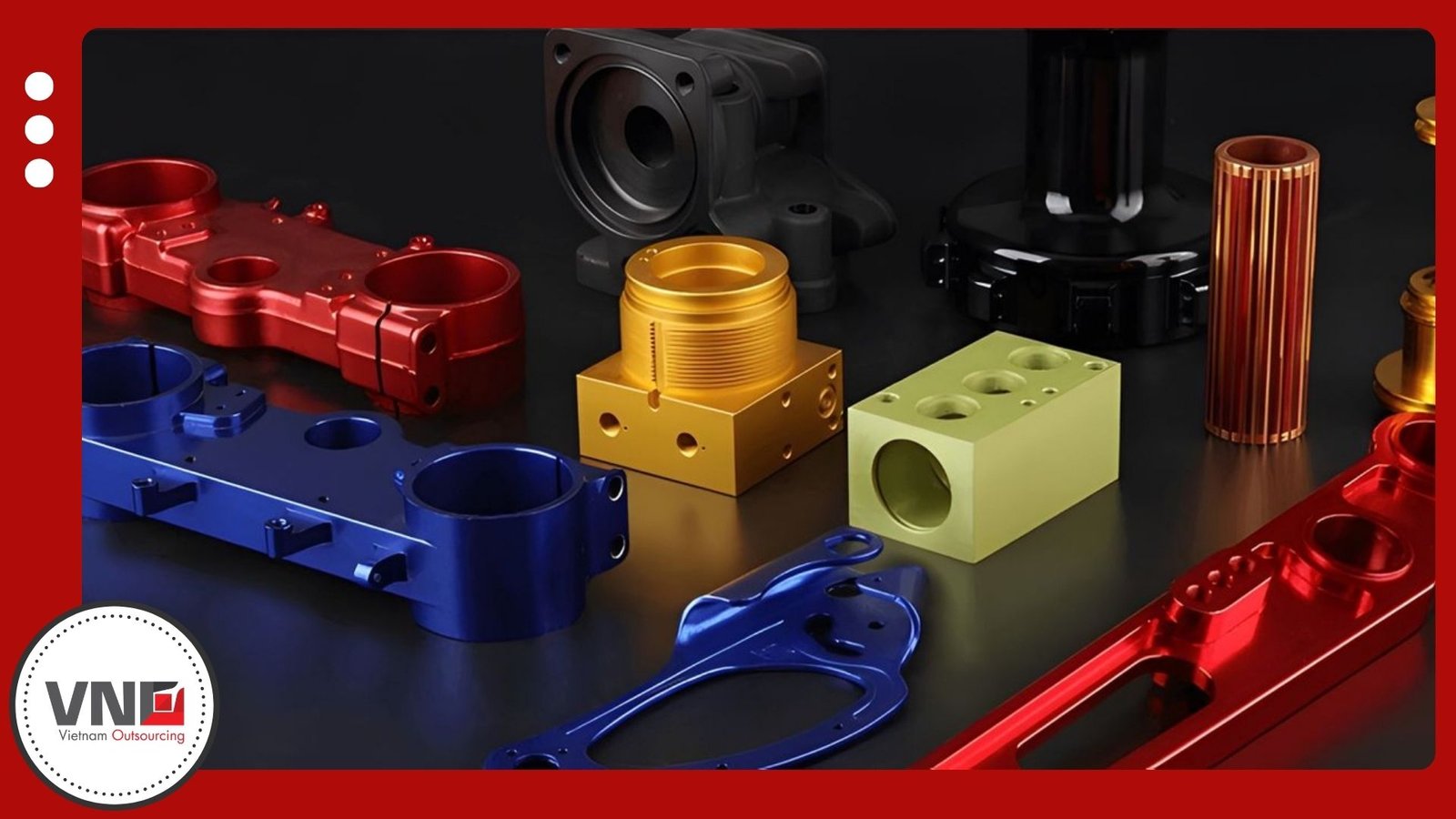Anodized aluminum is aluminum that goes through an electrochemical process to create a protective oxide layer. This layer makes the surface stronger, more resistant to scratches, and more durable against corrosion. Because aluminum already has a thin oxide film, it is well-suited for anodization. The process builds on that film without reducing the strength of the base metal.
During anodization, aluminum serves as the anode in an electrolyte bath. When current flows, a new oxide layer forms and bonds firmly with the surface. Factors such as voltage, time, temperature, and the electrolyte mix control the thickness of this coating. Most anodized aluminum in Vietnam ranges from 6 to 18 microns depending on the application.
The result is a porous yet strong surface. Manufacturers can also add colors or sealants, making anodized aluminum both functional and attractive.

Hard anodization is a specialized process that produces a much thicker oxide layer than standard anodization. This technique creates surfaces that are extremely durable, resistant to scratches, and able to withstand harsh environments.
Compared to stainless steel, hard anodized aluminum is lighter, less expensive, and easier to machine. Many products also receive a Teflon coating, which provides nonstick properties and further improves resistance to wear. Because of its durability, hard anodized aluminum is widely used in cookware, automotive components, and industrial equipment.
In addition, the coating offers electrical insulation, making it suitable for electronic and aerospace applications. The combination of lightweight properties and superior surface strength gives hard anodized aluminum an advantage in both consumer and industrial markets.
Anodized aluminum has a wide range of uses thanks to its corrosion resistance, surface hardness, and aesthetic appeal. Some notable applications include:
Because anodized aluminum combines beauty with functionality, it continues to replace heavier and more expensive metals in global industries.
Over the past decade, anodized aluminum in Vietnam has gained strong recognition in international markets. Vietnamese suppliers have invested in advanced production lines imported from Germany, Japan, and Taiwan. These facilities include automated plating tanks, dyeing tanks, ED systems, drying ovens, and robotic cranes to ensure consistency and high output.
Vietnamese factories produce anodized aluminum with coating thicknesses ranging from 6 to 18 microns, offering a wide variety of finishes and colors that meet ISO and ASTM standards. With production capacity expanding rapidly, Vietnam is now positioned as a reliable alternative to China and India for anodized aluminum sourcing.
At Vietnam Outsourcing (VNO), we help U.S. and EU clients connect with trusted Vietnamese suppliers specializing in anodized aluminum. Our engineering team oversees technical requirements and quality assurance, ensuring that buyers receive corrosion-resistant, aesthetically refined products at competitive prices. By outsourcing to Vietnam, companies benefit from lower costs, advanced facilities, and reliable delivery schedules. For deep insight of Vietnamese market, you might want to read aluminum manufacturing in Vietnam